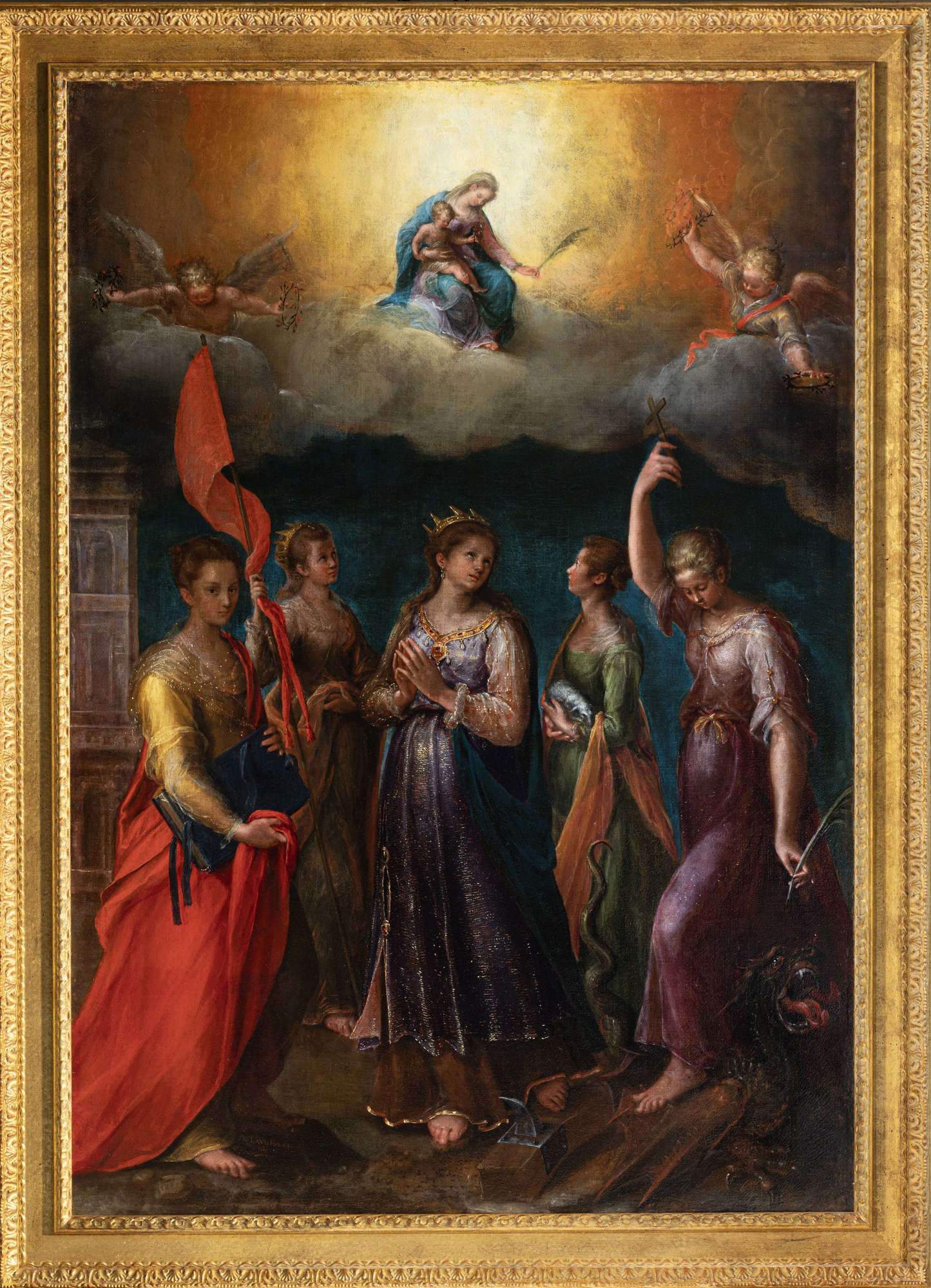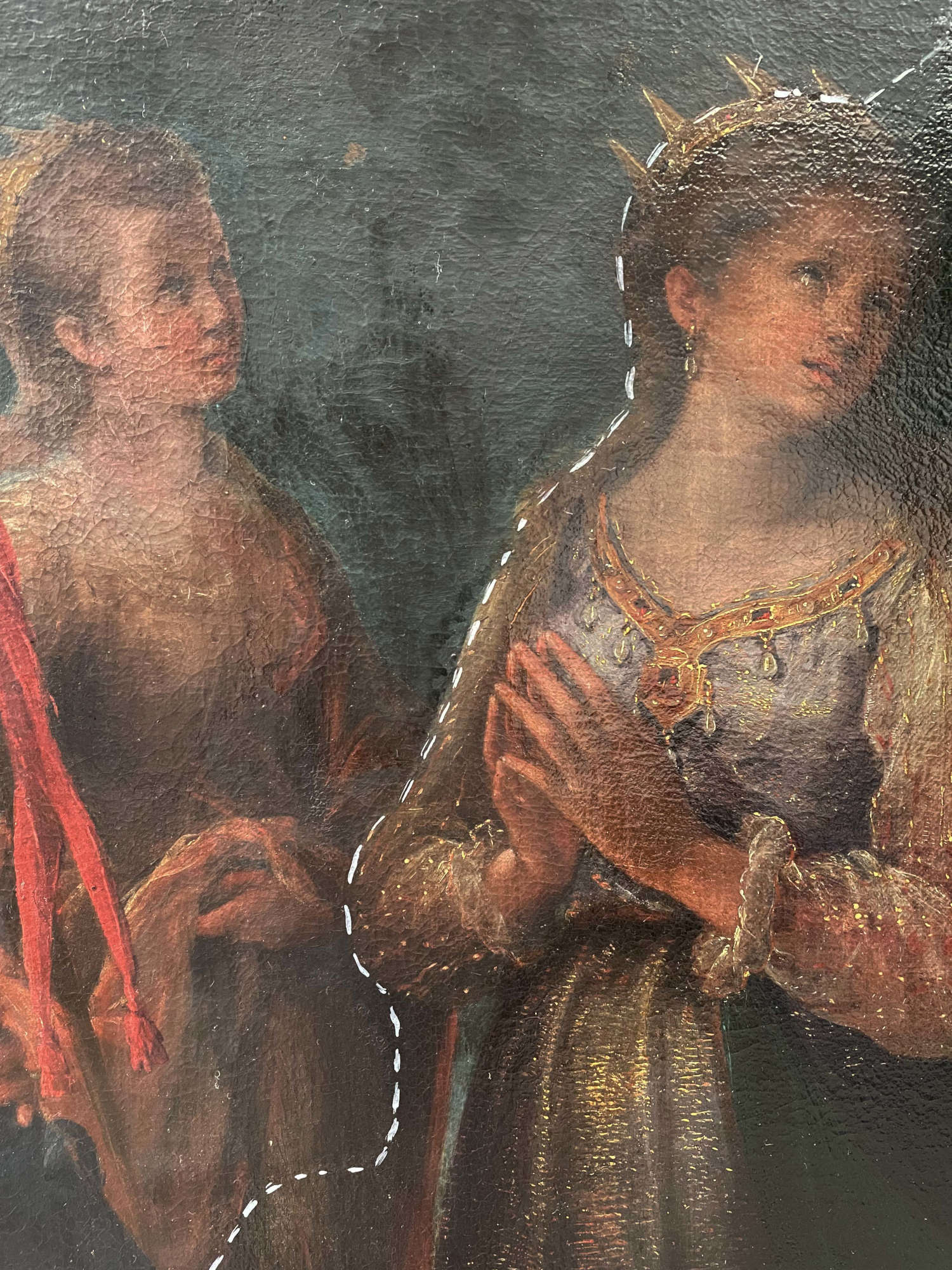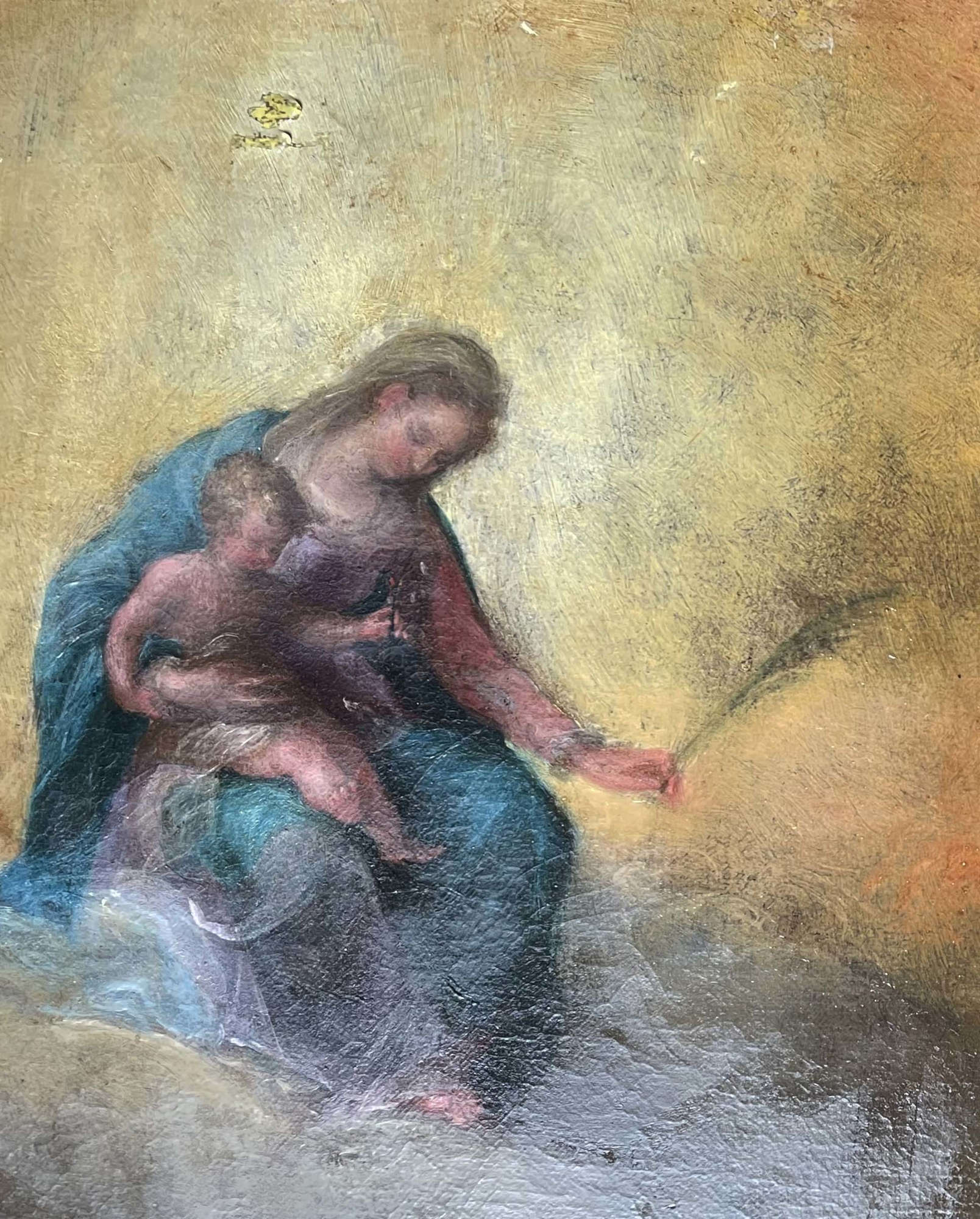In Bologna , the restoration of an important painting by Lavinia Fontana (Bologna, 1552 - Rome, 1614), theApparition of the Madonna and Child to Saints Catherine of Alexandria, Margaret, Agnes, Ursula and Barbara, kept at the Pinacoteca Nazionale di Bologna, has been completed. For several years the work had been lying in storage at the Via delle Belle Arti institution due to poor conservation conditions, but as of today it is once again on public display in Room 22 dedicated to Mannerism. The painting had been selected in April 2023 as part of the sixth edition of the Opera tua competition, the project of Coop Alleanza 3.0 carried out in collaboration with Fondaco Italia and under the patronage of the Italian Touring Club. This project, dedicated to the enhancement of Italian cultural heritage, has over the years contributed to the restoration of 41 works of art throughout Italy.
The company that carried out the restoration was Carlotta Scardovi’s SOS ART, which initially carried out a diagnostic investigation aimed at studying the materials and execution techniques, and then proceeded with the restoration. The paint film had a layer of superficial deposits of atmospheric particulate matter and carbon black. The varnish was very thick and oxidized, so much so that it obscured precious details and three-dimensionality of the pictorial composition. There were glue residues from the glazing within the cretto bowls and unraveling due to previous cleaning work, particularly on the flesh tones, the red banner, the clouds on the right, and the robes. There were also small gaps on the upper side of the sky and in the lower left corner, filled in with colored putty and retouched with restoration paint. As for the support, the canvas of the painting, which is lined, was planar and rather taut. The anchorage to the frame was done with sellerine and was in good condition. Surface deposits of atmospheric particulate matter and carbon black were present, as well as fragments of incongruous material between canvas and frame on the underside. The frame, not original, is expandable and in good condition. The frame was absent: a gilded wooden frame of the “cassette” type was therefore made and mounted on the painting.

 The
TheAs for the intervention, it was cleaned by dusting with soft brushes and subsequent swabbing with a ph 7.5 controlled, slightly basic aqueous solution for the removal of the most cohesive lampblack. The oxidized varnish was removed, after solubility testing with swabs, with a mixture of IA4 free solvents i.e. isooctane and acetone. Removal of the old solubilized paint was performed with ligroin and 9:1 isopropyl alcohol. Gap filling, surface imitation with plaster and glue, and completion of the intervention with watercolor mimetic integration was then performed. The punctual pictorial retouching was carried out with special care, with paint colors for restoration, to reduce interference of particularly unveiled areas in the presence of exposed preparation. The intervention on the surface ended with a final protective varnish. On the back, following dusting, the removal of incongruous materials present between canvas and frame on the underside was done. During the restoration, the splint supporting the canvas was also removed and replaced with a new frame.
The painting depicting theApparition of the Madonna and Child to the Saints Catherine of Alexandria, Margaret, Agnes, Ursula and Barbara is displayed for the first time after the restoration alongside the Portrait of the Gozzadini Family and the Child in the Cradle, in a special section dedicated to the works of Lavinia Fontana.
The small altarpiece with the Apparition of the Madonna and Child is signed and dated 1601. Coming from the church of San Michele in Bosco, it depicts the apparition of the Virgin to the saints Catherine of Alexandria in the center, Agnes and Margaret on the right, and Barbara and Ursula on the left, all recognizable by their respective iconographic attributes. In the general layout and arrangement of the figures, the work is inspired by Raphael’s Ecstasy of Saint Cecilia, exhibited in the Renaissance section of the Pinacoteca, revisited through an elegant and precious interpretation of Venetian colorism and Mannerist painting from Parma.

 Detail of the
Detail of the
 Detail of the
Detail of the“It is a moment of great happiness and importance for the Pinacoteca di Bologna, as indeed for every museum, when an asset is returned to public enjoyment,” says director Maria Luisa Pacelli. “And it is for this reason that I want to express my heartfelt gratitude to Coop Alleanza 3.0 not only for the restoration of our Lavinia Fontana painting, but more generally for the group’s commitment to cultural heritage. As we know, in fact, without a real and effective synergy between the public and private sectors, and without the passion and expertise of professionals and operators in the field, it would be very difficult to ensure the protection of such a vast and fragile heritage as that of our country.”
“With the 2023 edition of Opera tua and through the recovery of this extremely valuable painting and the other two local masterpieces now once again on display in Padua and Fermo, the Cooperative has combined in a concrete and tangible way the enhancement of the territory with the promotion of gender inclusion,” says Alice Podeschi, Director of Member and Stakeholder Relations and Engagement at Coop Alleanza 3.0 “The Cooperative’s vision of culture is characterized by sharing and inclusiveness, within a path built with the community and institutions and centered on the concept of closeness to the territory: enhancing its peculiarities, personalities, history, is not only a way to pay homage to its excellence, but also to ensure that these are also usable by future generations: a commitment that, from 2017 to today, thanks to Opera tua has found concreteness in the restoration of 41 works, with an investment of about 900 thousand euros.”
Daughter and pupil of painter Prospero Fontana, Lavinia Fontana completed her training in her father’s workshop where she drew on a wide range of expressive models, from Emilian, Venetian, Lombard and Tuscan-Roman experiences. At her father’s, she came into contact with the reformers of Italian painting, Ludovico, Agostino and Annibale Carracci, who were not much younger than her but did not fail to enrich her figurative culture. In the city of Bologna, the painter developed an autonomous language and soon acquired a reputation as a skilled portrait painter, distinguishing herself by the accuracy of her rendering of hairstyles, clothing and jewelry. In her portraits of illustrious personalities of her time, including aristocrats, scholars, diplomats and ecclesiastics, she managed to skillfully bring together the prototypes of international fashion, the demands of moral severity of the Catholic Counter-Reformation and the new instances of Bolognese naturalism. The Portrait of the Gozzadini Family is among the most influential examples of the genre. His copious pictorial production includes mythological, historical, biblical, and sacred subjects and numerous altarpieces. She achieved her greatest successes in Rome, where she moved permanently in 1603 at the invitation of the new pope Gregory XIII, the Bolognese Ugo Boncompagni, of whom she painted a famous portrait, staying there until his death. Lavinia is today universally recognized, along with Sofonisba Anguissola, Artemisia Gentileschi and Elisabetta Sirani, among the female protagonists of Italian painting between the sixteenth and seventeenth centuries.
 |
| Bologna, important painting by Lavinia Fontana restored at Pinacoteca Nazionale |
Warning: the translation into English of the original Italian article was created using automatic tools. We undertake to review all articles, but we do not guarantee the total absence of inaccuracies in the translation due to the program. You can find the original by clicking on the ITA button. If you find any mistake,please contact us.